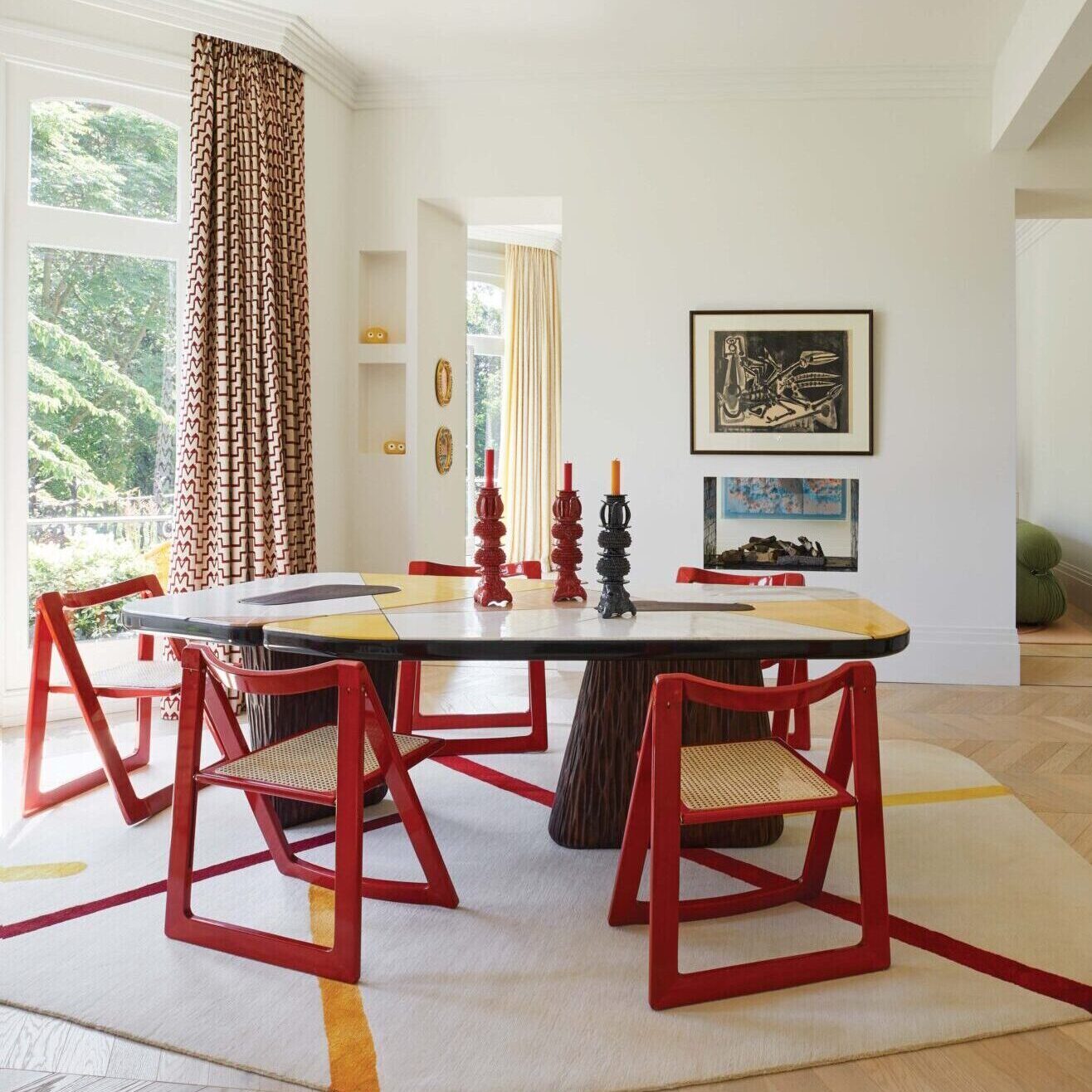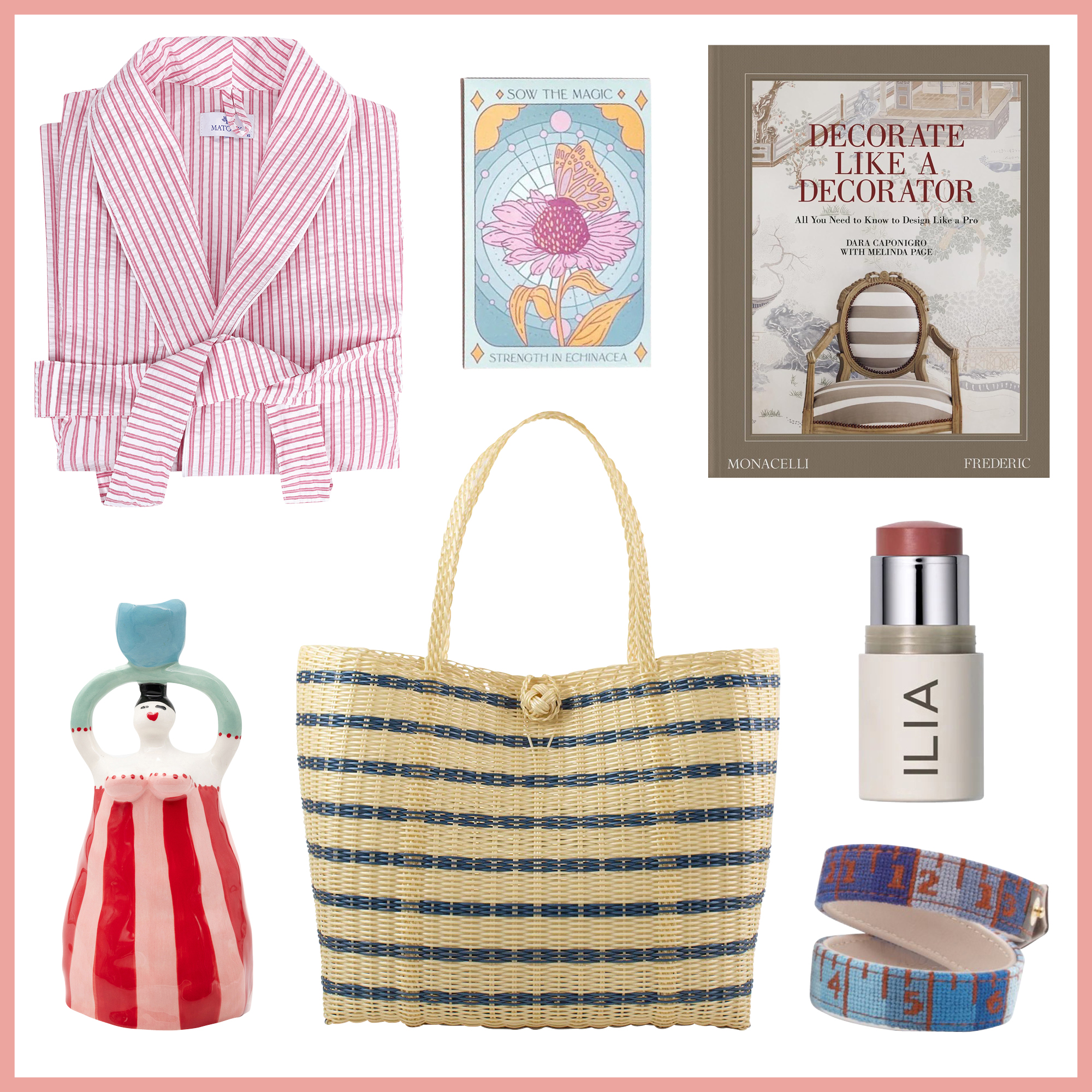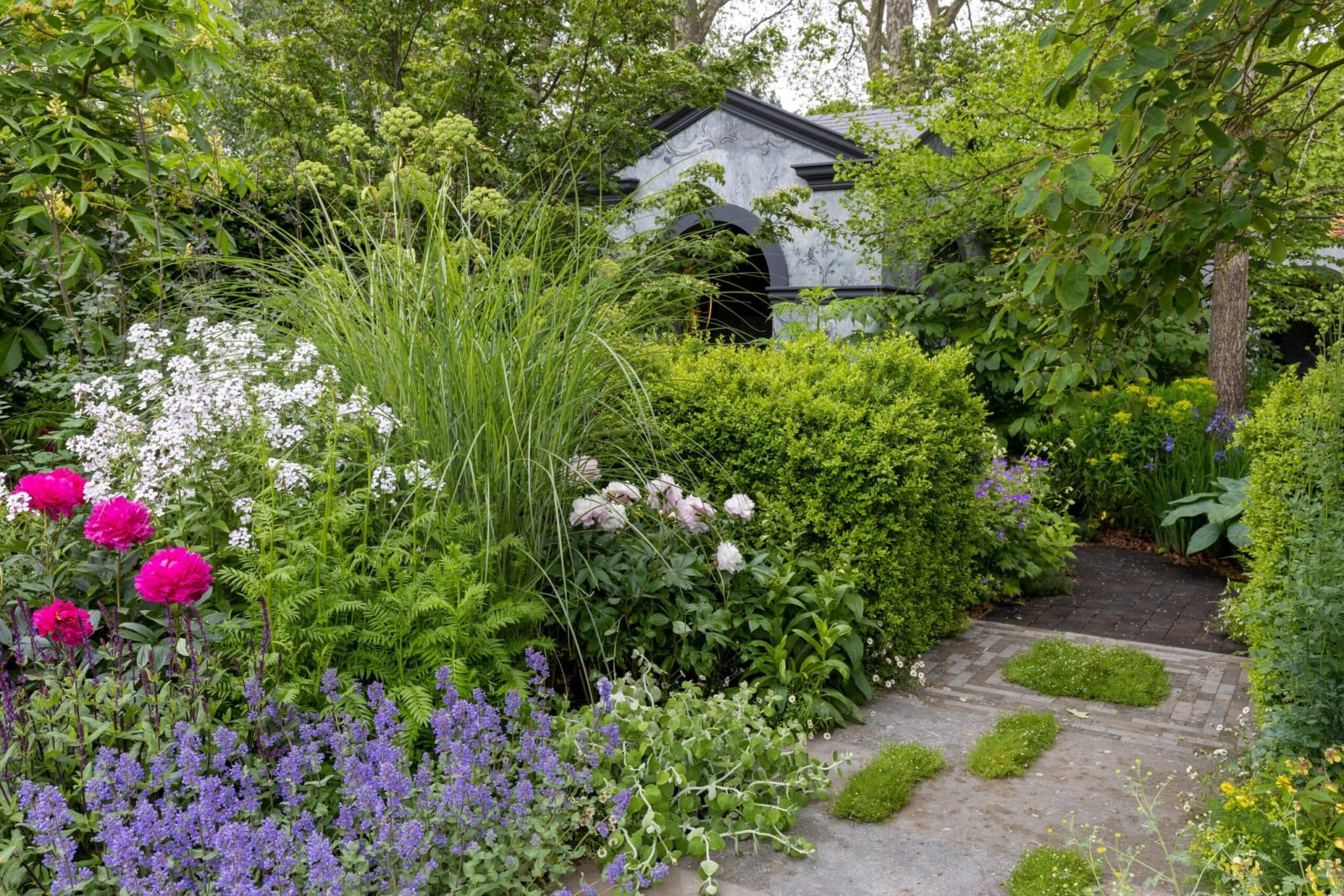Is your green space making you feel a bit blue? Last month’s annual RHS Chelsea Flower Show was filled with ideas that will give your garden the lift it needs. For one week, the gardening aficionados from around the globe (myself included) descended on London’s Royal Hospital grounds to be wowed and inspired by the greatest talents in the world of horticulture. And if the show gardens of the past were pristine capsules of perfection, filled with manicured topiaries and perfectly clipped swatches of grass, this year’s chucked those ideas out of the proverbial window in favor of highlighting a dynamic new ethos happening in the world of gardening.
The horticultural super stars behind the 36 plots demonstrated countless exciting new ways to make our gardens more sustainable and resilient to the ravages of a changing climate, from embracing plants traditionally known as weeds to making the most of rainwater. Whether you have a few planters on a balcony or halcyon acres of lush growth, you’ll find plenty of ideas that can be implemented into your very own Eden.
Mix It Up with Edimentals
-
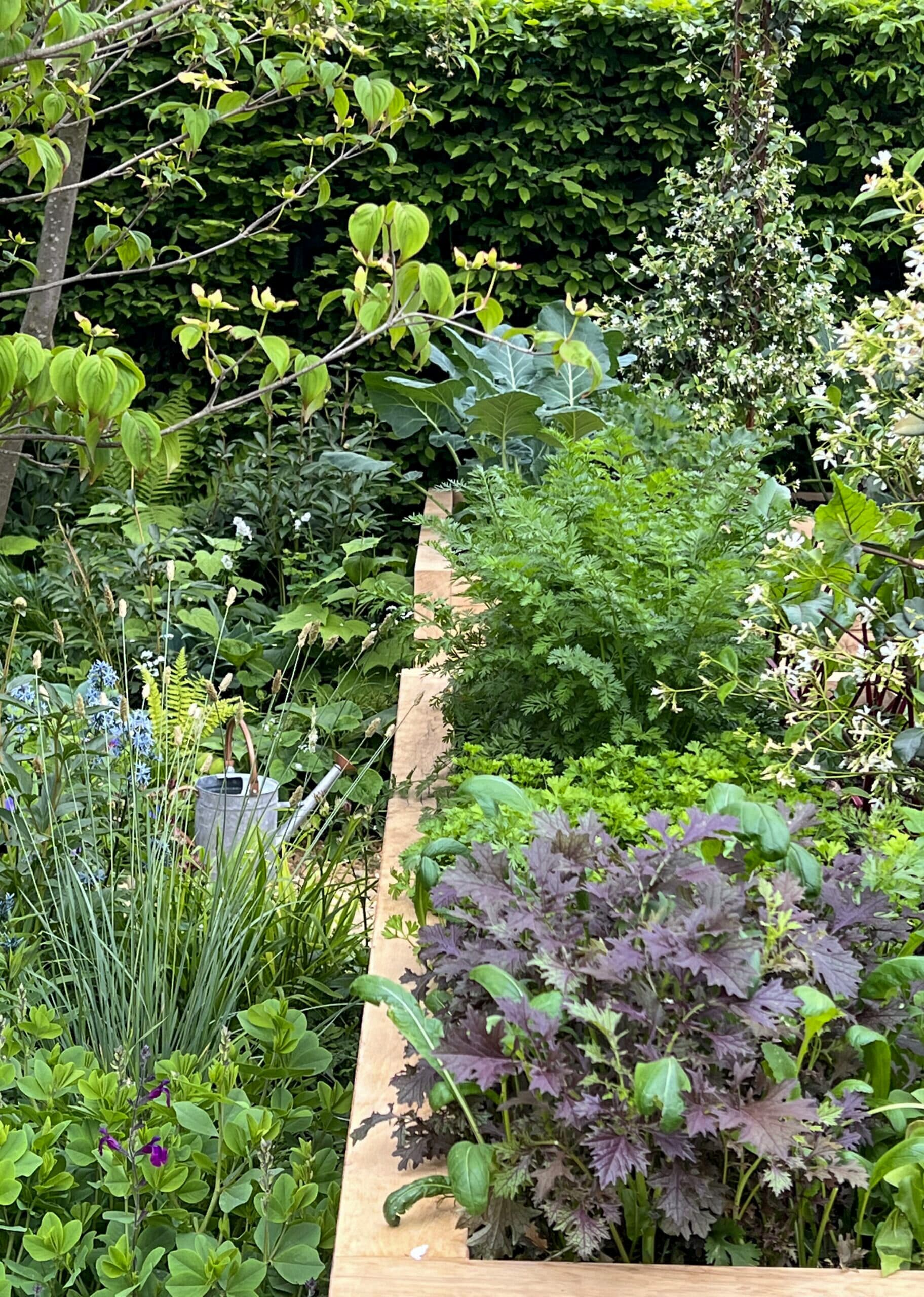
Edible plants filled the London Square Community Garden, designed by James Smith.
Michael Devine -

What better place to enjoy a meal than under a pergola?
RHS / Tim Sandall
Plants that do double duty were the stars of this year’s show gardens. Combining decorative and edible qualities, “edimentals” like nasturtiums, pansies, and salad brunet were spotlighted at the London Square Community Garden designed by James Smith.
Look Into the Iris
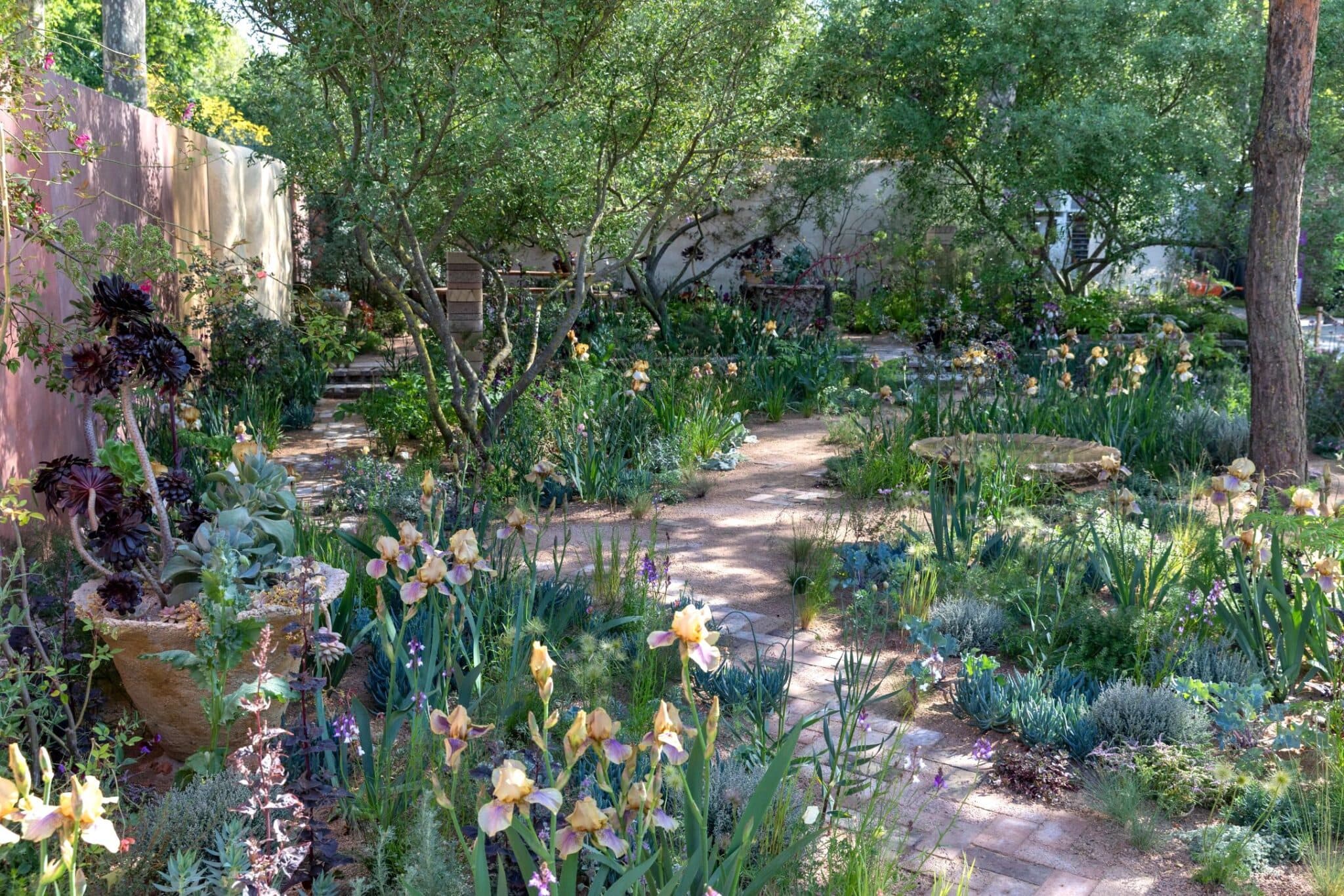
Benton End Irises filled The Nurture Landscapes Garden, designed by Sarah Price.
RHS / Sarah CuttleOne of the most-talked about gardens was created by designer Sarah Price. Inspired by the great plantsman and artist Sir Cedric Morris and his influential garden Benton End, she used an array of Benton End irises (originally bred by Morris) to create a serene oasis. Irises an ideal addition to any garden: They come back year after year, multiply, are drought resistant, and are available in the most delicious colors.
Make a Splash
-
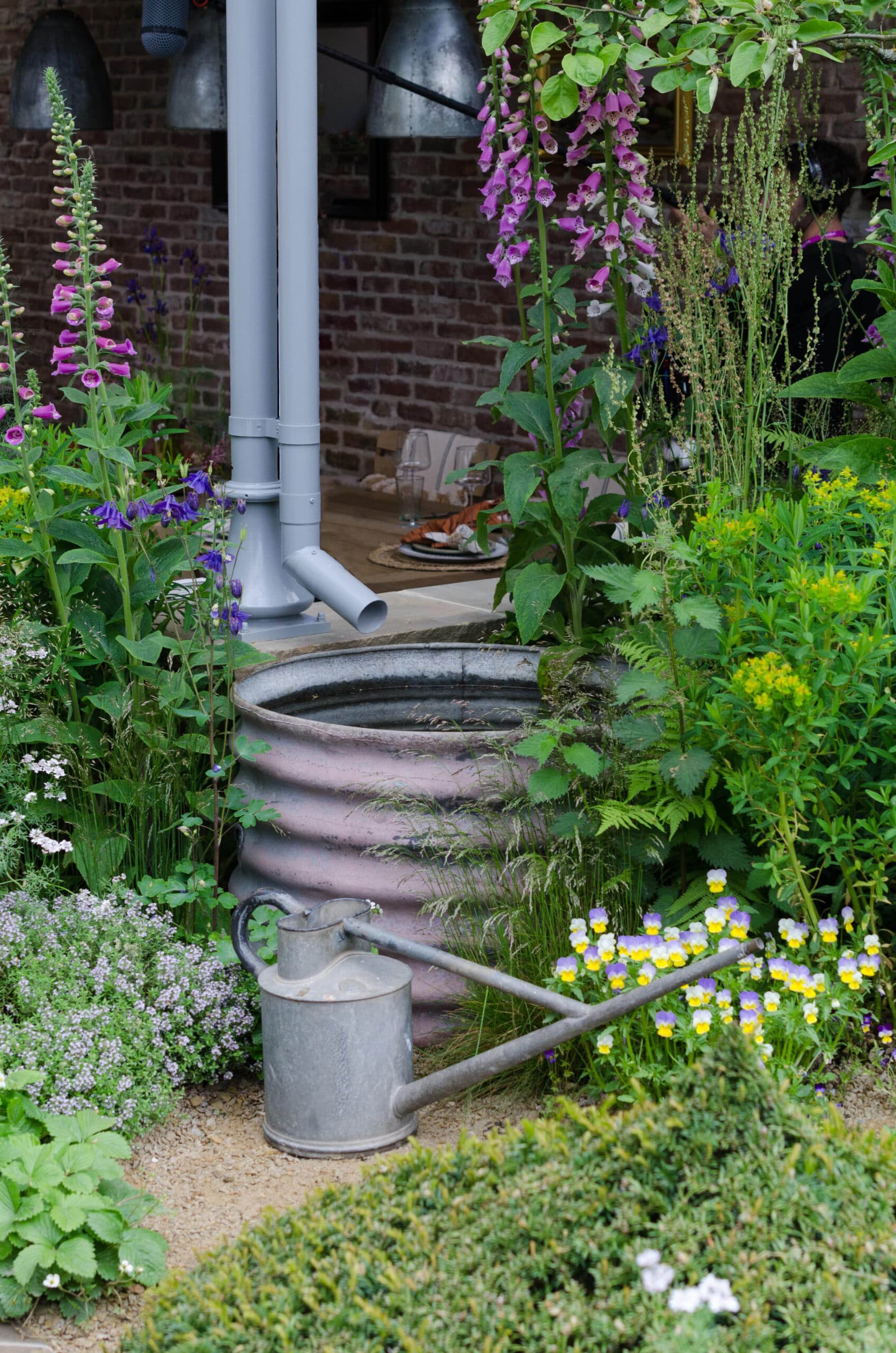
Zinc tubs catch rainwater in the The Savills Garden, designed by Mark Gregory.
Michael Devine -
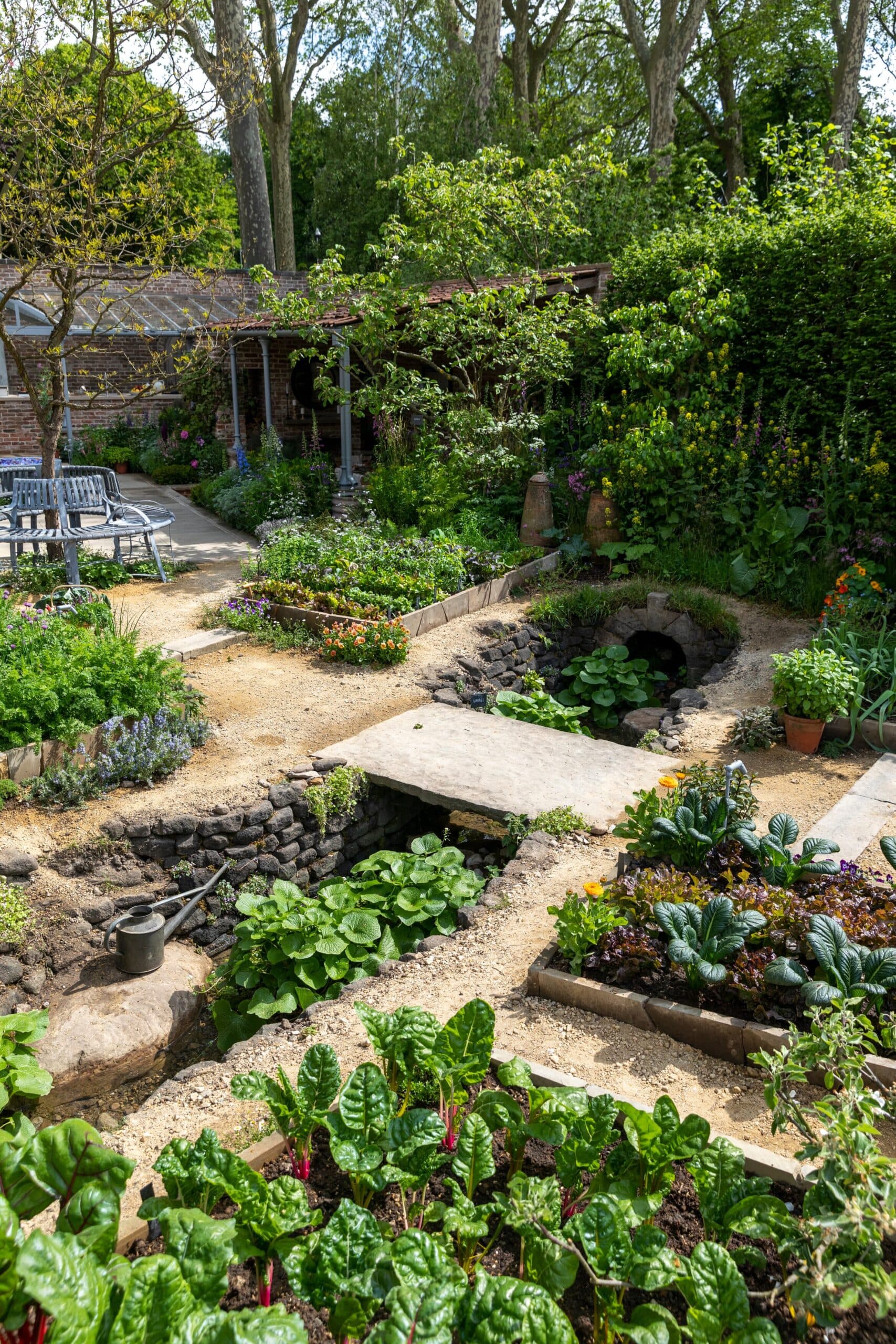
More edimentals flourished in this farm-to-table garden, which also incorporated an outdoor kitchen.
RHS / Sarah Cuttle
While rainwater is the gold standard for watering plants, rain barrels are often cumbersome as they are unsightly. Mark Gregory’s solution? Install a more appealing zinc tub to catch water from the downspout. It also benefits local birds and insects by providing them with a more accessible source of water.
Get in the Weeds
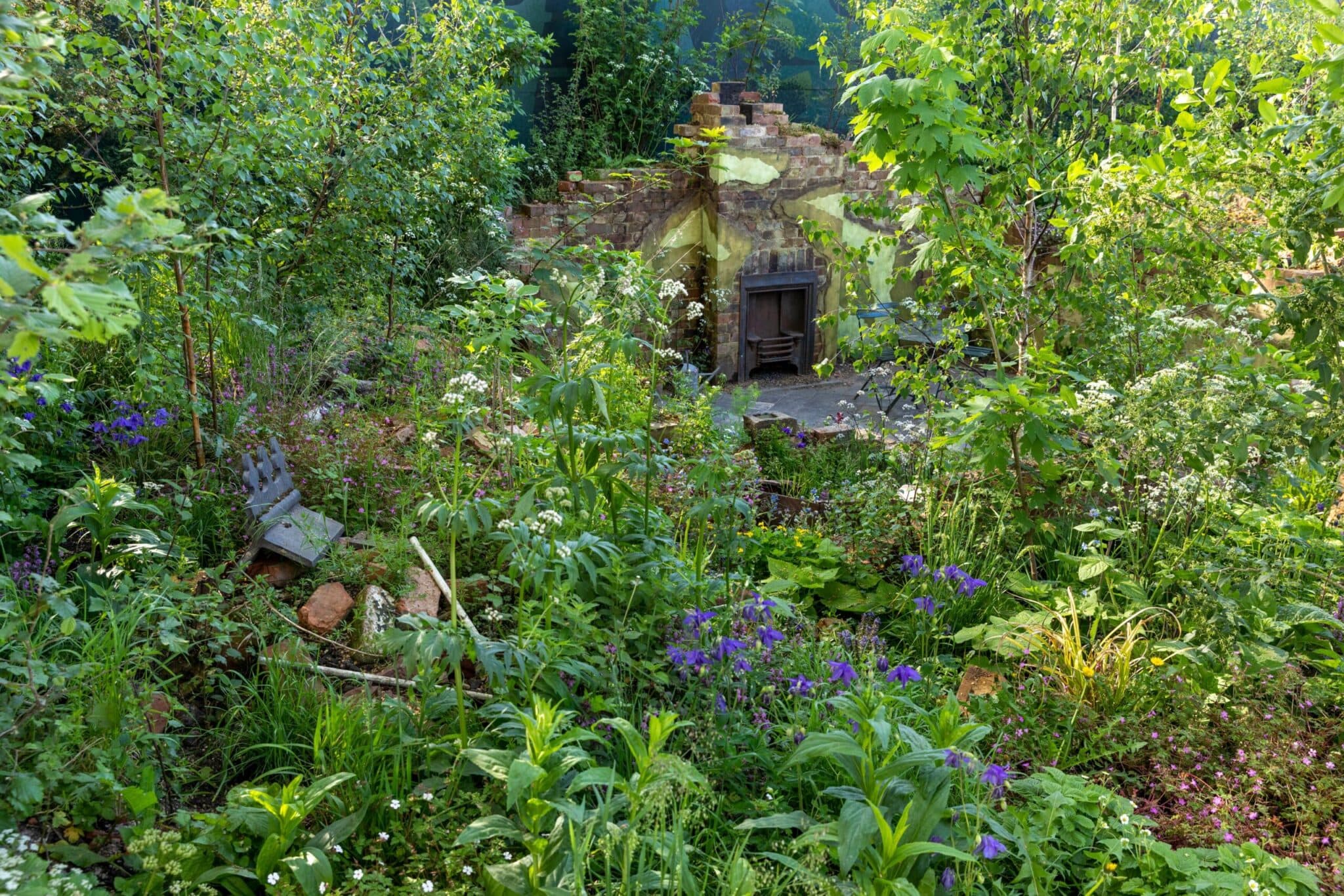
The Centrepoint Garden, designed by Cleve West, was filled with dandelions, nettles, cleavers, and wood avens.
RHS / Sarah CuttleIn what is sure to be music to the ears of gardeners everywhere, the pristine, weed-free garden is officially passé. The hip back yard of today takes a more laid-back approach to weeding, accepting that volunteers like dandelions and nettles should be embraced rather than pulled out—in fact, they’re a great resource for the pollinators and insects that help our gardens grow.
Pave the Way
-

Salvaged concrete paved the Centre for Mental Health’s The Balance Garden, designed by Jon Davies and Steve Williams of Wild City Studio.
Michael Devine -
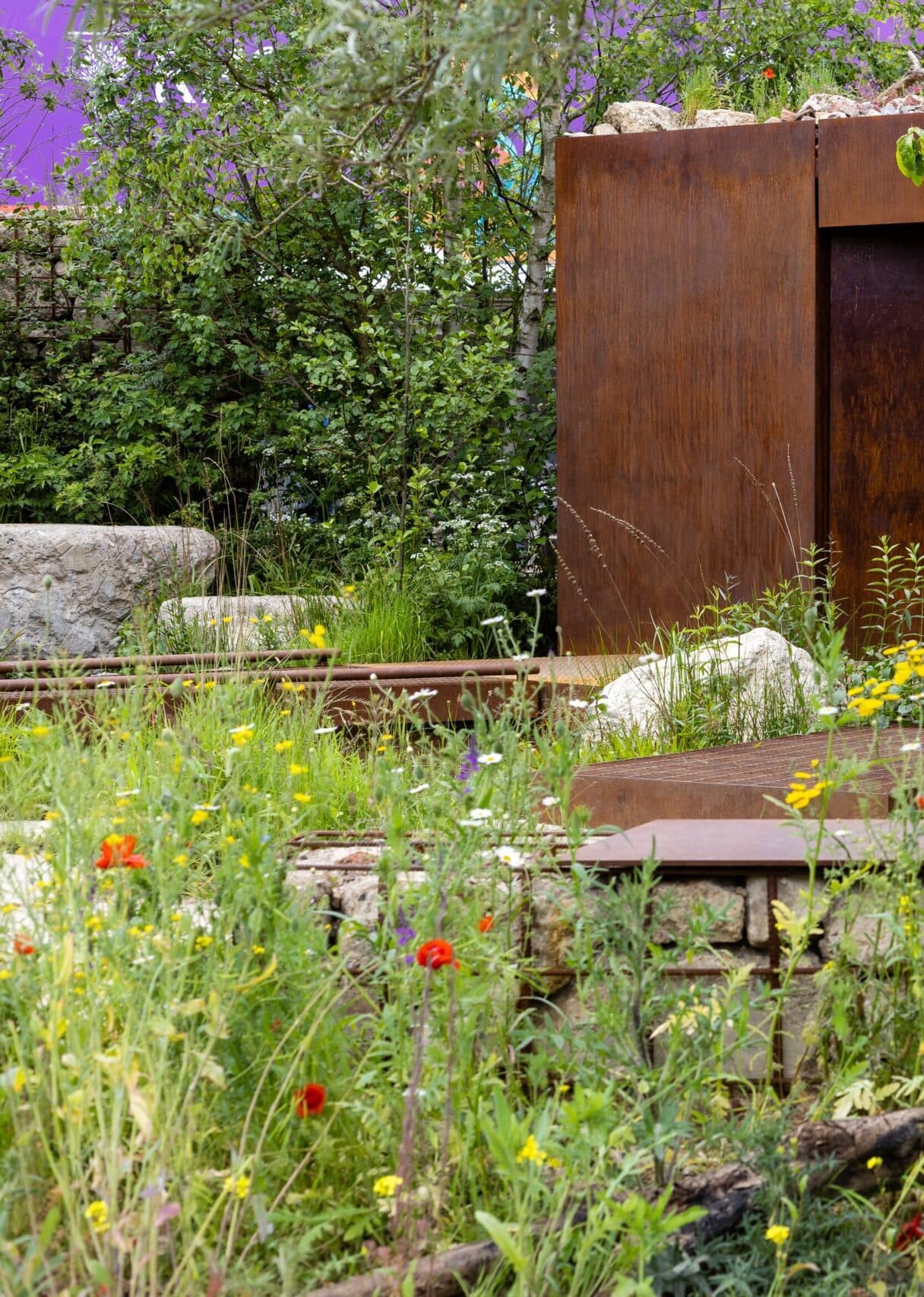
Reclaimed steel beams and a shipping container became integral architectural elements.
RHS / Neil Hepworth
Crushed site waste was given a new lease on life by Jon Davies and Steve Williams of Wild City Studio, who used recycled concrete slabs to pave large areas. At the center of the garden, an old shipping container was transformed into a “mushroom den,” while salvaged steel beams created walkways.
Stencil It In
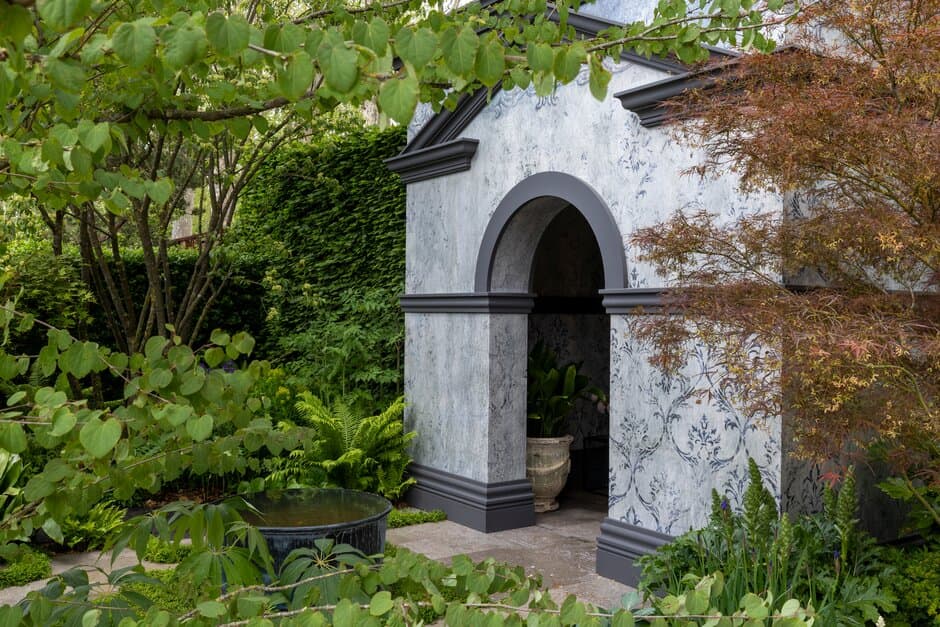
Designed by Chris Beardshaw, the Myeloma UK A Life Worth Living Garden won both the RHS Gold Medal award and People’s Choice Best Show Garden.
RHS / Neil HepworthIs your boring garden shed getting you down? Take inspiration from designer Chris Breadshaw, who added surface interest to a garden temple by applying an innovative patterned paper that anyone could replicate by stenciling the exterior walls. It was a striking, unexpected moment that made for a total show-stopper.
Call Rubbish
-

Old building rubble was reused as garden mulch in The Royal Entomological Society Garden, designed by Tom Massey.
Michael Devine -
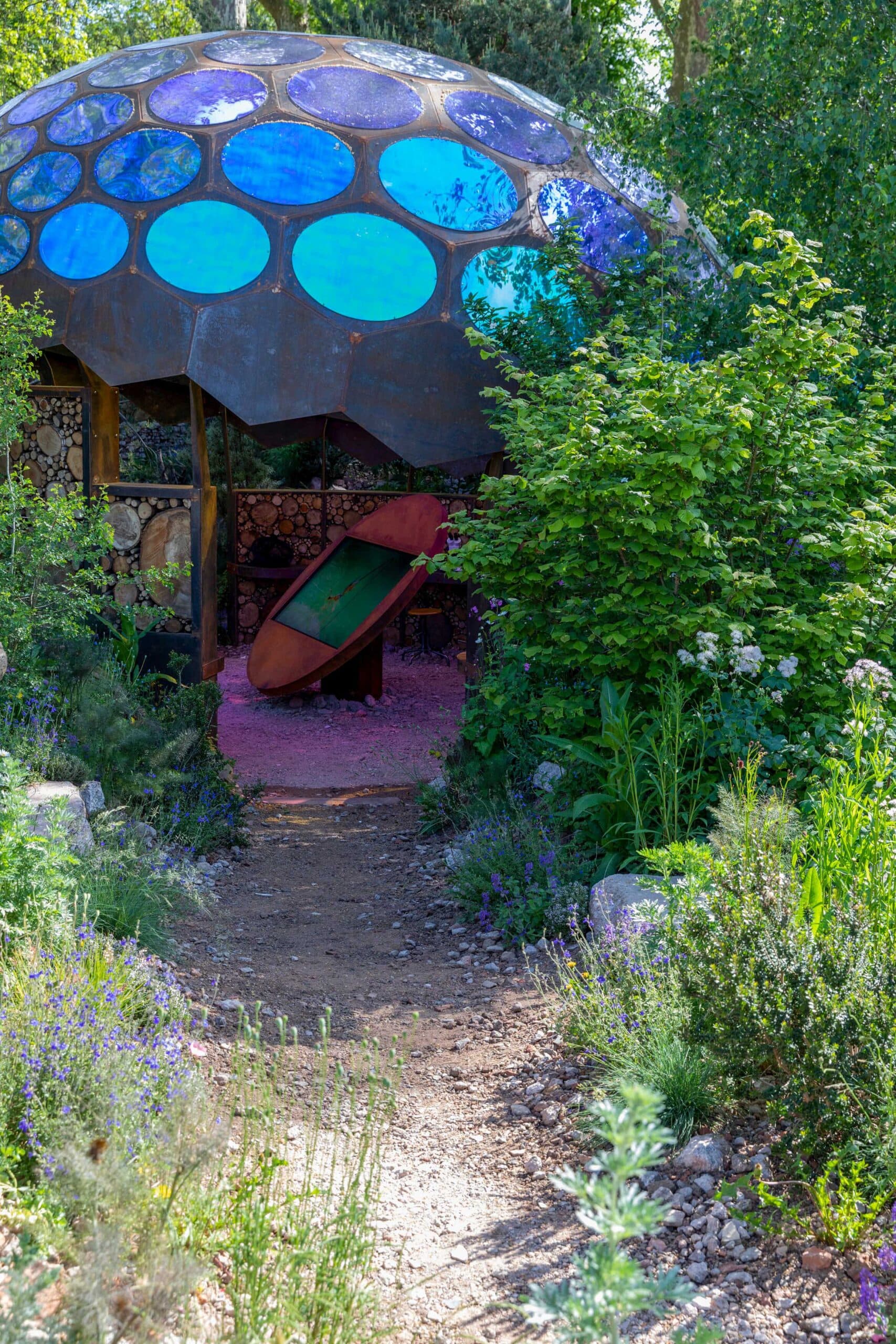
Inspired by an insect’s eye, the outdoor laboratory was surrounded by pollinator-friendly blooms.
RHS / Sarah Cuttle
Building waste is a serious problem, and any way to find a new use for it is more than welcome. Tom Massey was one of the garden designers who addressed the issue, using graded building rubble as garden mulch. Not only is it sustainable, but it helps to suppress weeds, retain soil moisture, improve drainage, and provide a habitat for insects.
Welcome the Beasties
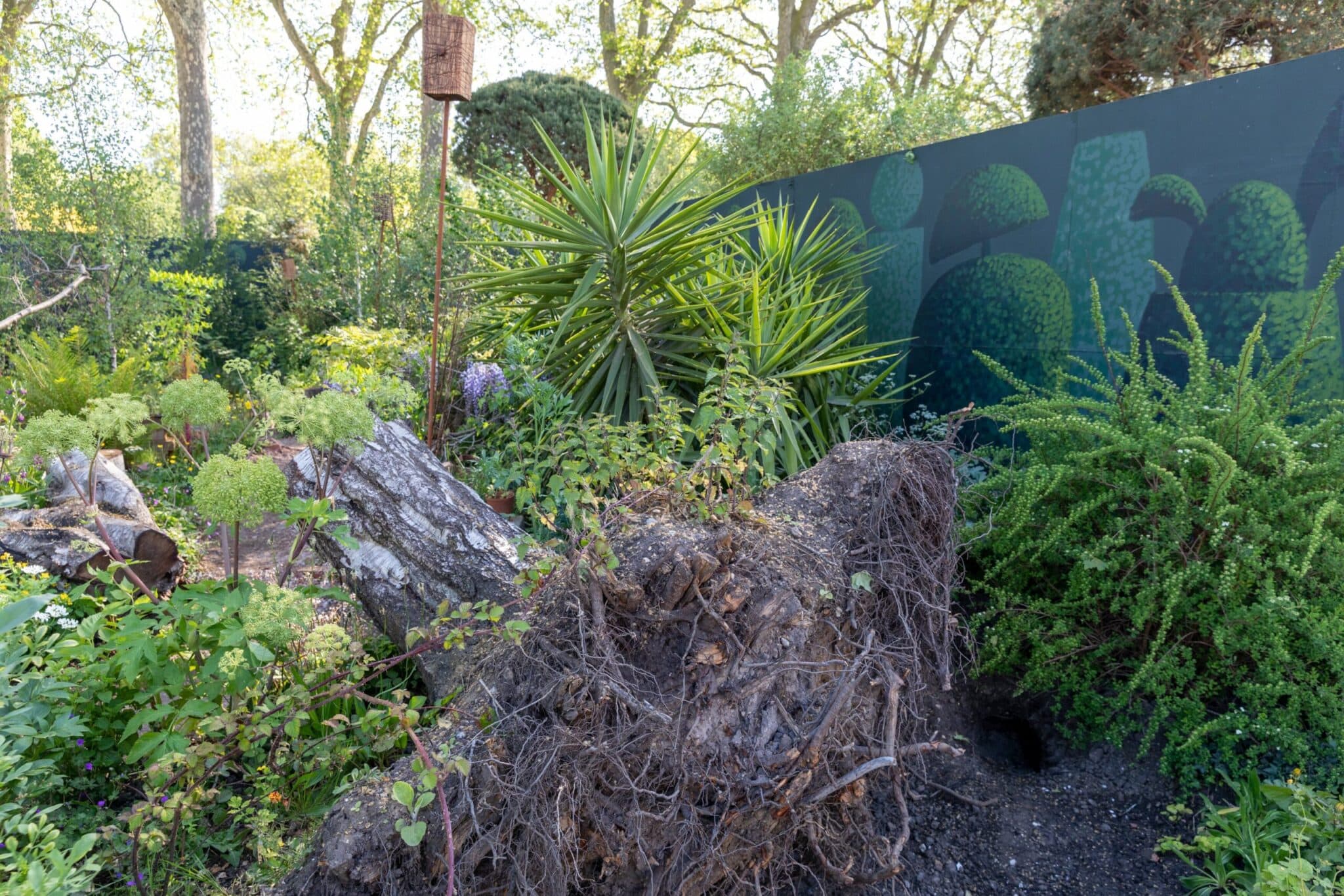
An uprooted tree in Cleve West’s Centrepoint Garden is a biodiverse habitat.
RHS / Sarah CuttleBefore you clear your garden of fallen trees and limbs, take a note from Cleve West, who put an uprooted tree at the center of his garden. Leaving dead trees in place creates an ideal habitat for wildlife: Insects feed on the material, birds and small animals can use it for shelter, and the decomposing wood nourishes the soil.
Keep It Dry
-

Drought-resistant plants filled the Samaritan’s Listening Garden, designed by Darren Hawkes.
Michael Devine -
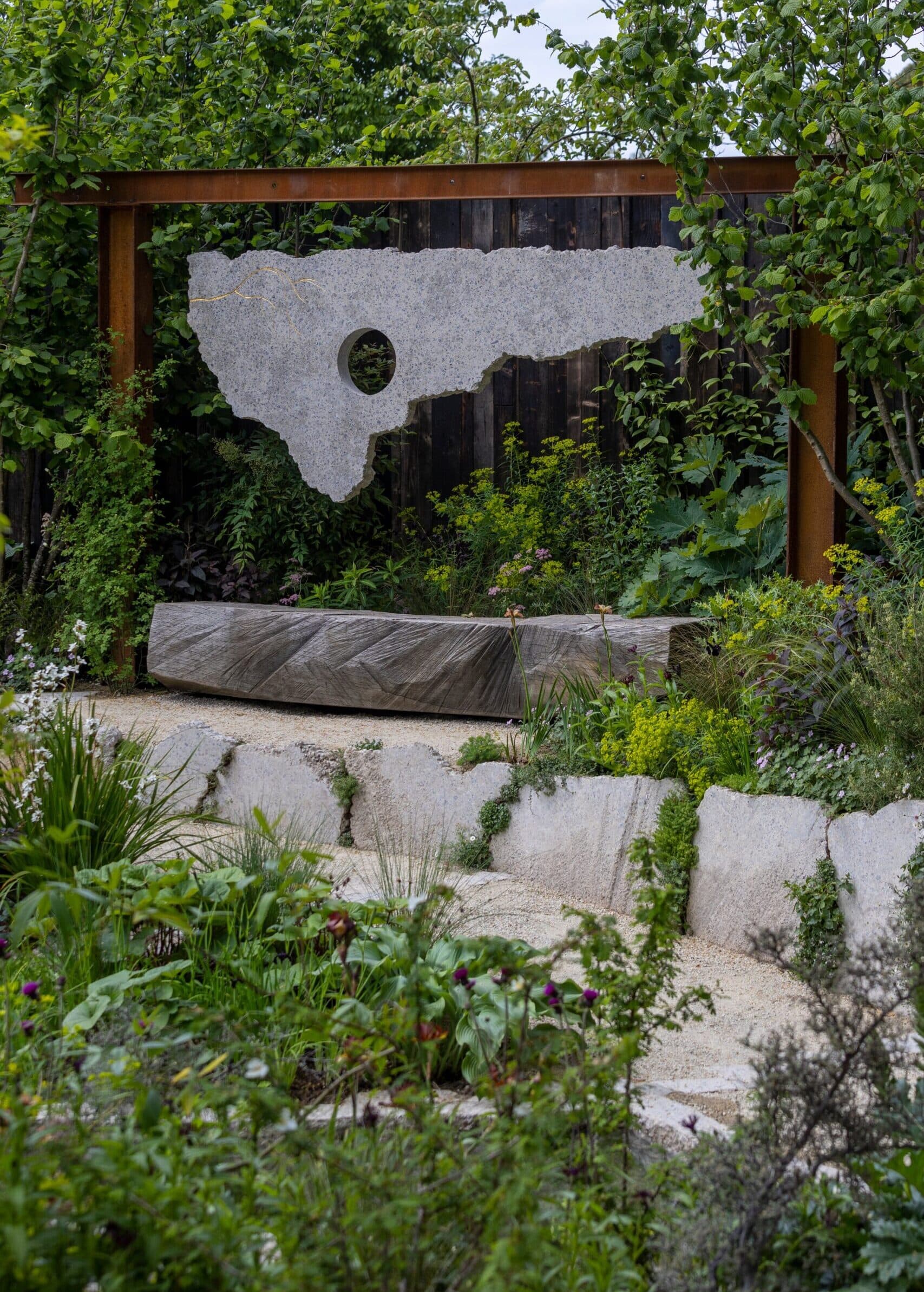
A hanging sculpture in the garden.
RHS / Neil Hepworth
As summers get hotter and drier, using plants that don’t require massive amounts of water to look good is an easy way to climate-proof your garden. Favorite herbs like rosemary, thyme and lavender are ideally suited for a dry environment; for those with a taste for blooms, iris, stachys byzantina (or lamb’s ears), euphorbias, and salvias will fit the bill nicely.
